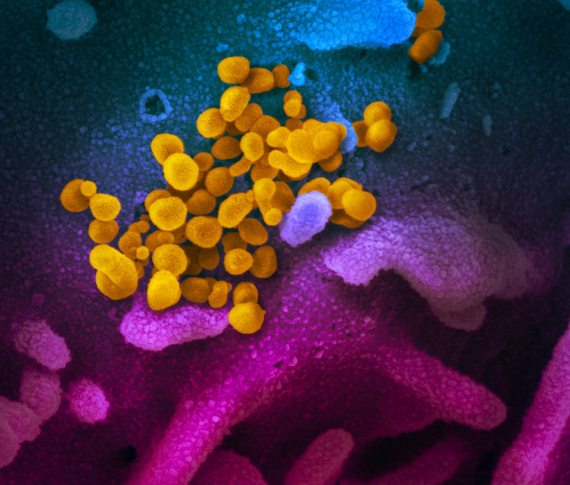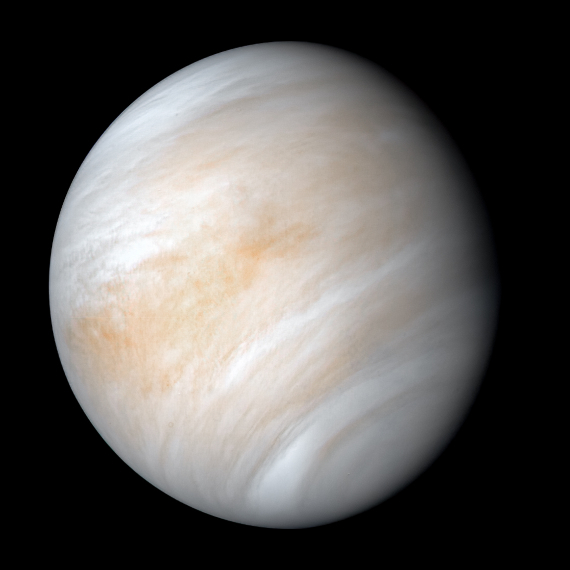In no other year in our recent history has global news been so dominated at all levels by a single common denominator. In 2020, the SARS-CoV-2 coronavirus pandemic of COVID-19 has eclipsed everything else. And being an issue where science has so much to contribute, the global crisis has monopolised the efforts of scientific research to unleash the full power of human ingenuity. Thus it is inevitable that part of the Top 10 science list of 2020 will be related to the pandemic, although there has also been no lack of significant, promising or intriguing advances in other scientific fields.
The fastest vaccines in history
Although there have been many scientific advances related to the pandemic, the most eagerly awaited one, now a tangible reality, deserves the place of honour: vaccines. Considering that the development of a vaccine usually takes about 16 years, the fact that in just one year there are more than 200 in the pipeline, 13 of them in the final phase of clinical trials or going through the approval process, is an almost inconceivable achievement. This vast range of offerings covers the entire spectrum of different technologies, but there are especially high hopes for the new mRNA vaccines such as those from BioNTech-Pfizer and Moderna-NIAID, as these platforms can be adapted very quickly to the development of new vaccines against future emerging viruses. Since the publication of the SARS-CoV-2 genome in early January, it took Moderna just two days to design its new vaccine on paper and 25 days to produce the first batch. Emergency approvals, currently underway in several countries, give confidence that much of the world’s population will be vaccinated by the end of 2021, although questions remain about the duration of the protection.

A threat identified in record time
The rapid response of science to the threat of the new coronavirus, as soon as the first cases in China began to spread, also deserves special mention. All the findings and advances related to SARS-CoV-2 have broken speed records. Following the first news of the outbreak in Wuhan in December 2019, Chinese authorities and the World Health Organisation (WHO) reported the isolation of a new coronavirus on 9 January, the first genome of which was published on the Internet the following day. The first diagnostic test appeared two weeks later, when most of the world was still unaware of the outbreak of a rare pneumonia in China.

Today there are nearly one thousand diagnostic tests either approved or under development. By the end of January, studies had been published on the infectivity of the virus, its incubation period, the symptoms of the illness and its lethality. Within a few weeks the mechanisms of infection, cell receptors and protein structure of the virus were known. The study of possible treatments has also proceeded at breakneck speed, in an unprecedented global scientific effort.
Science revolutionises against the pandemic
Beyond the direct results of research into the new coronavirus and its disease, the global crisis triggered by the pandemic has shaken the very foundations of science. The accelerated pace of research has given unprecedented prominence to scientific pre-publication servers, previously almost restricted to certain disciplines. The dissemination of studies prior to appropriate peer review has been challenged due to doubts about the reliability of these results, but has also received support from those who champion the option of pre-publication as a boon to Open Science: research that is faster, more open, cost-free and transparently reviewed.

On the other hand, and although research has also suffered from the slowdown that has affected all activities, the pandemic has boosted the interdisciplinary nature of science. Scientists, engineers, technicians and academics from the most diverse branches, from mathematics to social sciences, have turned their efforts towards fighting the virus, whether by creating ventilators for the sick or studying the impact of the epidemic on the economy or on psychology.
Climate change is accelerating
Although the urgency of the pandemic has put concerns about climate change on the back burner, the problem continues to worsen. The alarm bells are ringing non-stop on the planetary control panel: earlier this year, a study revealed that ocean warming had reached a new peak in 2019, and that the temperature increase is accelerating at a fast pace. On 6 February, a record temperature of 18.4°C was recorded at a weather station in Antarctica. Three days later, another base on the same continent measured 20.75°C, the first time that 20°C was exceeded in Antarctica. In July, the World Meteorological Organisation warned that by the middle of the new decade, warming of 1.5°C above pre-industrial levels, set as a limit under the Paris Agreement, could be exceeded.

The take-off of New Space
We had been waiting for years, and finally 2020 has brought us the definitive take-off of New Space, the new private spaceflight operators. On 30 May, the company SpaceX, founded by technology magnate and entrepreneur Elon Musk, launched a Falcon 9 rocket into space carrying a Crew Dragon spacecraft with two NASA astronauts on board, bound for the International Space Station. With this first manned commercial flight, the United States regained access for humans to space from its territory, which it lost in 2011 with the mothballing of the space shuttles.

In December, the first high-altitude test flight of a prototype of SpaceX’s reusable interplanetary Starship took place. Although it exploded on landing, it is an important step in the development of a system that could in the future carry humans to Mars.
Life on Venus that came and went
On 14 September, a piece of scientific news that has nothing to do with the pandemic hit the headlines and may have attracted the most public interest in 2020. A study in Nature Astronomy announced the detection in the atmosphere of Venus of phosphine (PH3), a compound that on Earth is inextricably linked to life, as it is produced by anaerobic microbes in the decomposition of organic matter. Data from the JCMT (Hawaii) and ALMA (Chile) telescopes indicated a quantity of phosphine a thousand times greater than that on Earth.

Since this gas oxidises rapidly, the finding triggered speculation about the presence of life on Venus, a planet whose surface is uninhabitable but which exhibits conditions compatible with life at an altitude of tens of kilometres. Days later, a re-analysis of older NASA data supported the presence of phosphine on Venus. However, later studies questioned the discovery, finding errors in the calibration of the instruments. The original authors responded by lowering the estimated levels of phosphine, but stuck by their conclusion. New studies in 2021 could resolve the question of possible signs of life on Venus.
The first superconductor at room temperature
Superconductivity, the conduction of electrical current without resistance, is the springboard to new technologies of electricity transmission, magnetic levitation trains, particle accelerators or nuclear fusion reactors, among other applications. However, one limitation is the extremely low temperature at which these materials must operate. In 2020, a long-desired milestone has finally been reached, namely superconductivity at ambient temperatures. Researchers at the University of Rochester have achieved this at a temperature of 15°C using a compound of hydrogen, carbon and sulphur. Although the process currently requires a pressure of 2.6 million atmospheres, scientists hope to lower this requirement by fine-tuning the chemistry of the material.
CRISPR opens the way to clinical treatment
The CRISPR genome editing tool and its numerous derived systems have already revolutionised research techniques, and in 2020 they have also been used to create COVID-19 diagnostic tests. The Nobel Prize in Chemistry in 2020 has supported this new biotechnology by awarding prizes to its two main creators. While the therapeutic potential of CRISPR is still a promise, this year new steps have been taken towards its clinical use.

A phase 1 clinical trial has shown CRISPR to be safe for the treatment of T-lymphocytes in cancer patients. In that procedure, the genomic editing is done on cells extracted from individuals, but in March researchers announced the first use of CRISPR directly within a patient’s body, by injection into the eye to correct a blindness caused by a congenital mutation. Preliminary positive results in the treatment of blood diseases and promising data from cancer treatment in mice were also announced this year.
AI solves a major problem in biology
In 1972, in his acceptance speech for the Nobel Prize in Chemistry, biochemist Christian Anfinsen stated that the three-dimensional structure of a protein could be predicted simply by knowing its amino acid sequence, something that is easily decipherable with today’s technologies. The 3D structure of a protein is critical because its function depends on it; for example, it determines how the COVID-19 virus invades the cells of the organism. However, determining the structure from the sequence alone is so complex that solving it would take more time than the age of the universe, according to molecular biologist Cyrus Levinthal. But perhaps not anymore. At the end of November, Google’s Artificial Intelligence (AI) DeepMind laboratory announced that its AlphaFold program has basically managed to solve Anfinsen’s problem. The breakthrough has been hailed as a giant leap forward with vast applications in research, biotechnology and biomedicine.
Quantum supremacy again
For many experts, quantum computing is the next great technological leap since the birth of electronics. And although for the moment it is only a reality within the walls of laboratories and research facilities, new milestones are progressively being reached. In 2019, Google announced for the first time quantum supremacy, the solution of a problem unattainable by conventional supercomputers. However, their claim was challenged by IBM, who argued that the problem was in fact easily manageable for its Summit supercomputer.

In 2020 we have seen a new claim of quantum supremacy: the Jiuzhang supercomputer at China’s University of Science and Technology solves in 200 seconds a problem that would take 2.5 billion years for a classic supercomputer. While Google’s system employs electronic chips basically similar to conventional ones, Jiuzhang uses optical circuits.
Comments on this publication